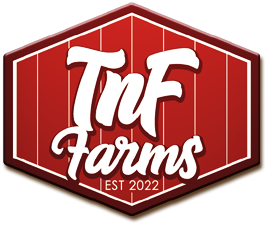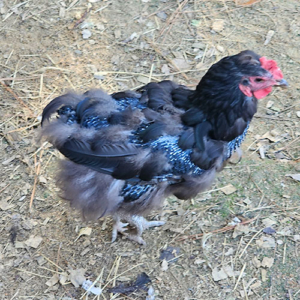Understanding Chicken Molting
It’s an old wives’ tale, but a heavy molt means a bad winter is coming. As autumn sets in and leaves begin to fall, your chickens are also undergoing a seasonal change of their own: molting. Molting is a natural process in a chicken’s life cycle when they shed and regrow their feathers. Fall molting is particularly common among chickens, and understanding this phenomenon can help you provide the best care for your flock during this transitional period. In my post, I’ll discuss the reasons behind fall molting, the stages of molting, and how you can support your chickens during this time.
Why Do Chickens molt in the fall?
Fall molting in chickens is triggered by the changing daylight hours and cooler temperatures. As the days grow shorter and temperatures drop, chickens receive cues from their environment that it’s time to shed and regrow their feathers. Molting helps chickens prepare for the colder months ahead by replacing old, worn-out feathers with new ones that provide better insulation and protection from the elements.
Stages of Molting
Molting occurs in distinct stages, which can vary in duration from chicken to chicken. It’s important to be aware of these stages to ensure your flock’s well-being during this period:
Early Signs
In the initial stage, chickens may start to appear a bit disheveled as they lose a few feathers here and there. This stage is often characterized by a decrease in egg production, as the energy and resources that would typically go into egg-laying are redirected toward feather growth.
Heavy Molting
During the peak of molting, your coop may look like a chicken exploded with all the loose feathers. Your chickens may appear patchy or even bald on some parts of their bodies. This is a challenging stage for chickens, as they are more vulnerable to cold and potential injuries or damage from insects.
New Feather Growth
After the loss of feathers, the new feathers start to grow in. They often appear as pin-like structures called “pin feathers.” These new feathers can be itchy, causing your chickens to preen and groom themselves more frequently. As chickens grow pin feathers, they can be very sensitive. Handle your chickens more gingerly than usual as pin feathers can bleed when handled too roughly.
Completion
The final stage of molting is when all the new feathers have grown in, and your chickens have regained their full plumage. They will be fully prepared to face the cold weather with their fresh set of feathers.
Here are some ways you can help your chickens through the molting process
- Molting can be a stressful time for chickens. Minimize disturbances and handle them gently. Avoid introducing new flock members during this period.
- Make sure your coop is well-insulated and draft-free to keep your chickens warm as they go through the feather loss phase.
- Keep the coop clean to prevent mites and lice infestations, which can be more problematic during molting.
- Keep a close eye on your chickens for any signs of illness or weakness. Sick chickens may have a harder time withstanding the challenges of molting.
- Ensure your chickens have a diet rich in protein and essential nutrients. Protein is crucial during molting as it aids in feather regrowth. Consider adding supplemental protein sources like mealworms or my favorite, Black Oil Sunflower Seeds (BOSS).
Black Oil Sunflower Seeds (BOSS)
Black Oil Sunflower Seeds (BOSS) are a versatile and nutrition-packed food source commonly used in various contexts, from chickens to wild and song birds even human consumption. BOSS can be picked up at virtually any feed store or Tractor Supply even Walmart. These seeds are a popular choice for bird enthusiasts due to their high oil content, which provides essential nutrients and energy for a wide range of bird species. I provide a regular diet of organic, non-GMO Black Oil Sunflower Seeds. During a molt, I like to sprout the Black Oil Sunflower Seeds. Sprouted seeds are higher in antioxidants. The seeds are also easier to digest and my chickens will eat them over anything else.
Black Oil Sunflower Seed (BOSS) Nutrition
| Crude Protein | 15.0% |
| Crude Fat | 25.0% |
| Crude Fiber | 40.0% |
| Moisture | 12.0% |
Fall molting is a natural process that chickens go through to prepare for the colder months ahead. Understanding the stages and providing the right care during this period is essential for the health and well-being of your flock. Proper nutrition, low stress and a comfortable living environment, your chickens will emerge from molting ready to face the winter. So, as the leaves fall and temperatures drop, let your chickens molt in peace, you’re doing your best to support them through their seasonal transition.



